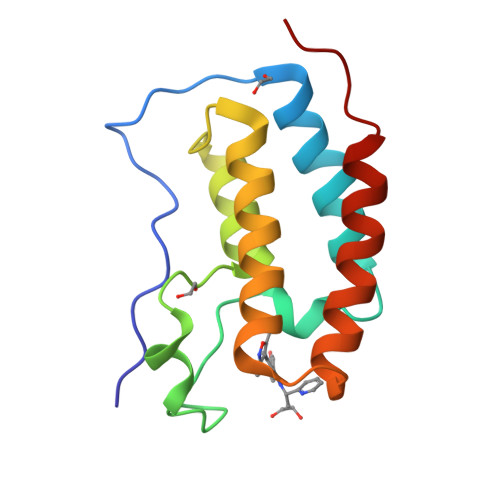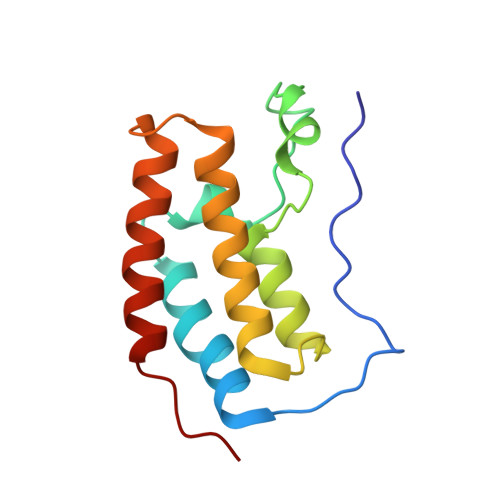BRD4 Profiling Identifies Critical Chronic Lymphocytic Leukemia Oncogenic Circuits and Reveals Sensitivity to PLX51107, a Novel Structurally Distinct BET Inhibitor.
Ozer, H.G., El-Gamal, D., Powell, B., Hing, Z.A., Blachly, J.S., Harrington, B., Mitchell, S., Grieselhuber, N.R., Williams, K., Lai, T.H., Alinari, L., Baiocchi, R.A., Brinton, L., Baskin, E., Cannon, M., Beaver, L., Goettl, V.M., Lucas, D.M., Woyach, J.A., Sampath, D., Lehman, A.M., Yu, L., Zhang, J., Ma, Y., Zhang, Y., Spevak, W., Shi, S., Severson, P., Shellooe, R., Carias, H., Tsang, G., Dong, K., Ewing, T., Marimuthu, A., Tantoy, C., Walters, J., Sanftner, L., Rezaei, H., Nespi, M., Matusow, B., Habets, G., Ibrahim, P., Zhang, C., Mathe, E.A., Bollag, G., Byrd, J.C., Lapalombella, R.(2018) Cancer Discov 8: 458-477
- PubMed: 29386193
- DOI: https://doi.org/10.1158/2159-8290.CD-17-0902
- Primary Citation of Related Structures:
5WMA, 5WMD, 5WMG - PubMed Abstract:
Bromodomain and extra-terminal (BET) family proteins are key regulators of gene expression in cancer. Herein, we utilize BRD4 profiling to identify critical pathways involved in pathogenesis of chronic lymphocytic leukemia (CLL). BRD4 is overexpressed in CLL and is enriched proximal to genes upregulated or de novo expressed in CLL with known functions in disease pathogenesis and progression. These genes, including key members of the B-cell receptor (BCR) signaling pathway, provide a rationale for this therapeutic approach to identify new targets in alternative types of cancer. Additionally, we describe PLX51107, a structurally distinct BET inhibitor with novel in vitro and in vivo pharmacologic properties that emulates or exceeds the efficacy of BCR signaling agents in preclinical models of CLL. Herein, the discovery of the involvement of BRD4 in the core CLL transcriptional program provides a compelling rationale for clinical investigation of PLX51107 as epigenetic therapy in CLL and application of BRD4 profiling in other cancers. Significance: To date, functional studies of BRD4 in CLL are lacking. Through integrated genomic, functional, and pharmacologic analyses, we uncover the existence of BRD4-regulated core CLL transcriptional programs and present preclinical proof-of-concept studies validating BET inhibition as an epigenetic approach to target BCR signaling in CLL. Cancer Discov; 8(4); 458-77. ©2018 AACR. This article is highlighted in the In This Issue feature, p. 371 .
Organizational Affiliation:
Department of Biomedical Informatics, The Ohio State University, Columbus, Ohio.




















